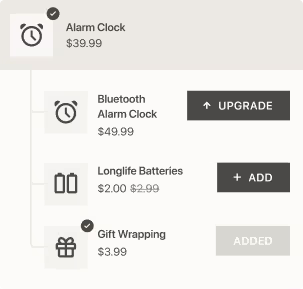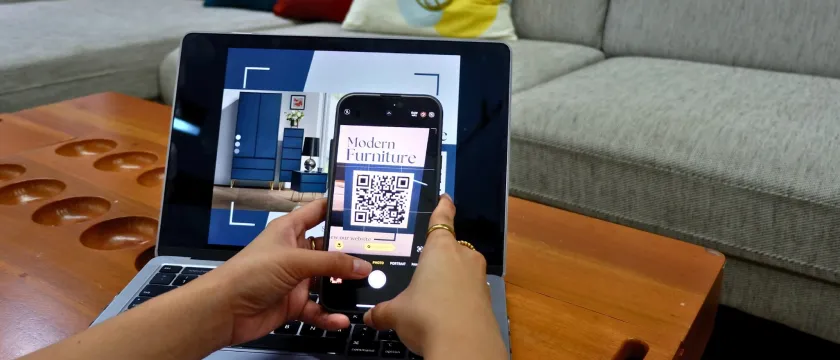When we began the switch to asynchronous working, we found a number of articles, videos and webinars on the topic that were a great help. Now we’ve decided to give back to the community and publish our own Notion page, where we describe the entire model in depth and how we constantly tweak and improve things. Hopefully you’ll find it inspiring in your own efforts to transform the way your company works.
Asynchronous collaboration happens at different times. People collaborate on projects, but just not at the same time. Each person works during a different time window based on their personal schedules. They can still come to the same office and see each other in person, but typically meetings aren’t set up for a specific time.
Remote collaboration, on the other hand, happens in different places. It can be both synchronous and asynchronous, but never face to face.

Asynchronous work is an excellent tool for people who are based in different time zones. Think of when you’ve had to sync at a time that suits everyone just to schedule a call. Getting everyone to meet together at the same time can be a real drag – while some are having to wake up super early, others are having trouble staying awake. But when you work asynchronously, the time of day doesn't matter.
For async collaboration to work, the way your team communicates needs to be transparent.
This means that most of the time everyone communicates publicly and not in private mode. That way everyone keeps up to date with what’s happening. Being able to read through public channels on Slack is one example of this transparency at work.
First and foremost, you’ll need to explicitly agree on a couple of golden rules everyone is willing to stick to.
True, it’s going to require a certain degree of commitment to do the responsible thing. Like accepting that I need to get back to a colleague with quality output within a certain time frame, instead of waiting for the request to resolve itself.
On the other hand, the rewards are well worth it. Asynchronous communication has proven to massively boost people’s ability to express themselves, identify problems and communicate them in a comprehensive way.
- Make sure your message contains all of the information you need to share. Try to predict your colleague’s questions and answer them right away.
🪄 Is the message too long or overly complicated? Try a different format – make a video with Loom and show your screen. Or record a voice message and title it with the main topic so that it’s easy to look up later.

- If you’re posting to a group chat or channel, use English. Czech is OK only in private conversations with another Czech person.
- Use message scheduling for sending messages later. If you’re sending a private message to someone who’s currently inactive (night time, vacation, etc.), send the message later when you know he or she will be available. This helps tremendously in keeping communication seamless on all sides. Similarly, if you’ve something in your head that’s not so important but want to get it heard another time, just schedule the message.
- Don’t expect the person to reply in seconds. Everyone has a different schedule and style of work. You’ll get your reply in about 3–4 hours.
🪄 If you do need an ASAP response, call the person. At the same time, you might want to think about the urgent nature of your request – is there any way to avoid it being so pressing next time by planning ahead?
- Use emojis, they’re fast and efficient.
🪄 We’ve agreed on the exact meaning of specific emojis to make them work for us in everyday situations, typically to confirm something or show acknowledgement.
Slack has channels for all kinds of everyday topics and purposes, so use them as much as you can.
Emails are reserved for outbound communication.
If you need to discuss a more important topic in real-time, add it to the agenda of a regular meeting.
Sometimes the meeting holder can decide that a written summary or status update is enough, so they cancel the meeting and save everyone’s time.
Meetings are also recorded so you can watch them later or refresh your memory.
When it comes to regular meetings, we try to keep them to an absolute minimum. That means we revise the duration, attendees, and validity of these meetings on an ongoing basis. So, some meetings actually become redundant or get merged.
You might be under the impression that the goal of asynchronous mode is to keep contact between people at a bare minimum. In fact, it’s the opposite. But it’s not a case of quantity over quality either. Async communication acknowledges that more isn’t always better. The goal is to communicate more efficiently than you’d normally do if you were in the office.
Take a look at this Notion guideline:
Digismoothie is a group of like-minded people who share a set of values. One of these values is steering away from micromanagement, a management style prevalent in larger firms and corporate environments.
That said, for this kind of trust-based governance to work, there has to be a huge emphasis on personal accountability and a preference for taking the initiative instead of being told exactly what to do. Everyone in the organization is responsible for setting up a daily flow that helps them deliver, no matter where they are.
Company culture is, and always will be, linked to the characters of its leaders and founders. It will speak to, and stand above, the values that the company has in place.
At Digismoothie, even though we work async on a daily basis, we still get together once a month for a beer and organize off-sites twice a year to explore places of interest in the Czech Republic.
Values are a day-to-day thing. We have a dedicated Slack channel for each company value, where people are encouraged to post related updates that reflect what’s going on in their lives. A good example is the #freedom channel, where we share material about our different jobs or travel photos.

Whenever it comes to tweaking a process or adopting a new tool, we inevitably end up asking: How do we do this async?
When you’re introducing change to a team working in async mode, it’s essential to keep it simple. The new process needs to be explained step by step. Use short sentences, screenshots, videos, GIFs in Notion, anything that will help people get the gist during the first read-through. Also, make it easy for them to find the instructions again later.
At Digismoothie we’ve combined the best of both worlds – remote and asynchronous – all in one. True, you might never meet some of your colleagues in person. Also, the office doesn’t bustle with the sounds of everyday life, and it’s nice to grab a coffee with someone from time to time.

But! We all know that just because you sit next to someone in an office every day doesn't necessarily mean you’ll have a good relationship with that person. As many of us will tell you, we’ve found the #random channel on Slack to be a lot more lively. Plus, it’s easy for people to pitch in whenever suits. You might think that a place like this is only for introverts, but it’s not like we never meet up. So it’s not total isolation either!
We still have gaps in our async communication, and it's not perfect. But it's crucial to acknowledge and address them. We’ve made massive progress from the day we launched this model of working and we’re still learning.
A huge advantage of having your business use a combination of remote and async approaches is the ability to decide what suits your regime best. Your boss won’t be scheduling three meetings a day, with you having to stand up in front of everyone. There’s no more working from 9 to 5 or feeling bad for going on a morning run. Also, no guilt if you're not an early bird and your brain only kicks in at 11am … or later!
Async working is especially useful if you’re traveling the world but still want to work. Or if you just need to fit more family time into your day.
After all, every approach is an agreement between people. Remember, it’s about making the asynchronous mode work for us, not against us.
If you’ve got any async experience or tips to share, we’d love to hear your comments!

















